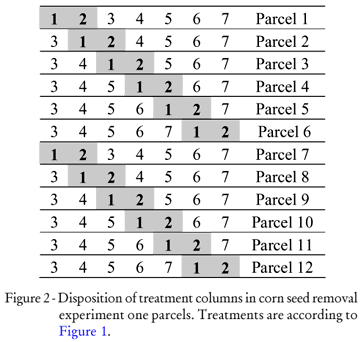Wheat, corn and rice crops in Brazil use seeds treated with systemic insecticide/nematicide carbofuran, mixed to rhodamine B red dye. Carbofuran is toxic and rhodamine B is attractive to wild birds that eat up these seeds, resulting in notable mortality during planting. A field experiment was performed in southeast Brazil to evaluate if camouflaged seeds would be less consumed by wild birds in comparison to commercial seeds with red-colored rhodamine B and aposematic blue seeds. Camouflaged seeds were less removed than seeds with rhodamine B and natural colors. The camouflaging was more effective in the presence of irregularities and litter. There was no removal of blue-colored seeds. As legislation requires treated seeds to receive a different color to avoid accidents with humans, camouflaging may be used as replacement of rhodamine B to reduce mortality rates of wild birds.
seed camouflage; carbofuran; rhodamine B; visual repellents; bird mortality




